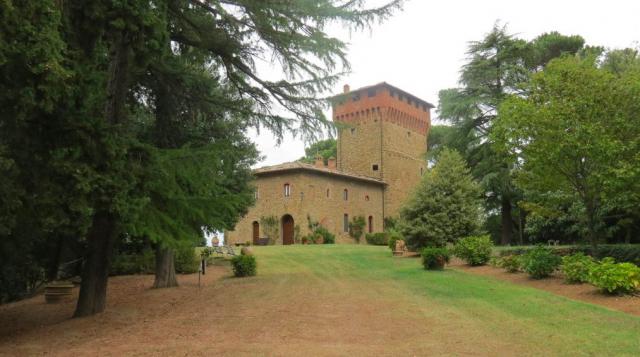D'Orlando Tower

The Tower of Paciano is the only thing that remains of the ancient Castle of Paciano Vecchio, one of the most important in the south-western area of Lake Trasimeno. Located on the ancient road from Perugia leading to Chiusi passing through Panicale. The “D’Orlando Tower” is mentioned in some documents of the Vatican Library. The Tower was first referred to in 917 when Emperor Berengario I (850-924), Marquis of Friuli and King of Italy, granted the fiefdom to Uguccione II, Marquis of Tuscany. In 1312 a new Paciano was already mentioned, so it can be assumed that the inhabitants, after having abandoned the old structure, had proceeded to rebuild the settlement further down, near the Tresa creek. The strategic importance of the castle was significant as a link between Montali and Agello which allowed a series of signals to be made as far as dominant Perugia. At the beginning of the 15th century, Bartolomeo I di Felcino Armanni, husband of Sismonda di Cola Bartolini, owned extensive properties there, (approx. 70 hectares), investing her dowry of 800 gold florins to purchase agricultural land. In 1434 it passed under papal dominion and Eugenio IV (1431-47) granted Tancredi I Bourbon di Sorbello the rebuilding of the Castle, nominating him count of Paciano Vecchio. This privilege was invoked in 1672 by Giovan Battista della Staffa with a hereditary title.
In 1789, Anna Maria Della Staffa married Giovanni Conestabile of Terni, so the family adopted the double-barrelled surname of Conestabile Della Staffa. From Francesco I Conestabile Della Staffa, husband of Princess Vittoria Odescalchi, the Castle passed on to the Misciatelli family in the 19th century and was used as a shelter for livestock and to house agricultural tools. In 1919-20 the entire complex and estate was purchased by the Perugian notary Antonio I Biavati di Filippo I who passed it onto Phillip II, the latter dying without heirs. Therefore the Castle went to his brother Pio’s son, Antonio II, who is the current owner. At the beginning of the 20th century, the Biavati family, also bought the Conestabile Della Staffa palace in Piazza Danti in Perugia, which had hosted Emperor Francesco I di Borbone (1777-1830) on his return from Rome. For a long time it was a fortified structure, surrounded by a luxuriant park and flanked by an 18th century building used as a dwelling. It was skilfully renovated returning it to its ancient splendour, and today is called “Paciano Tower”